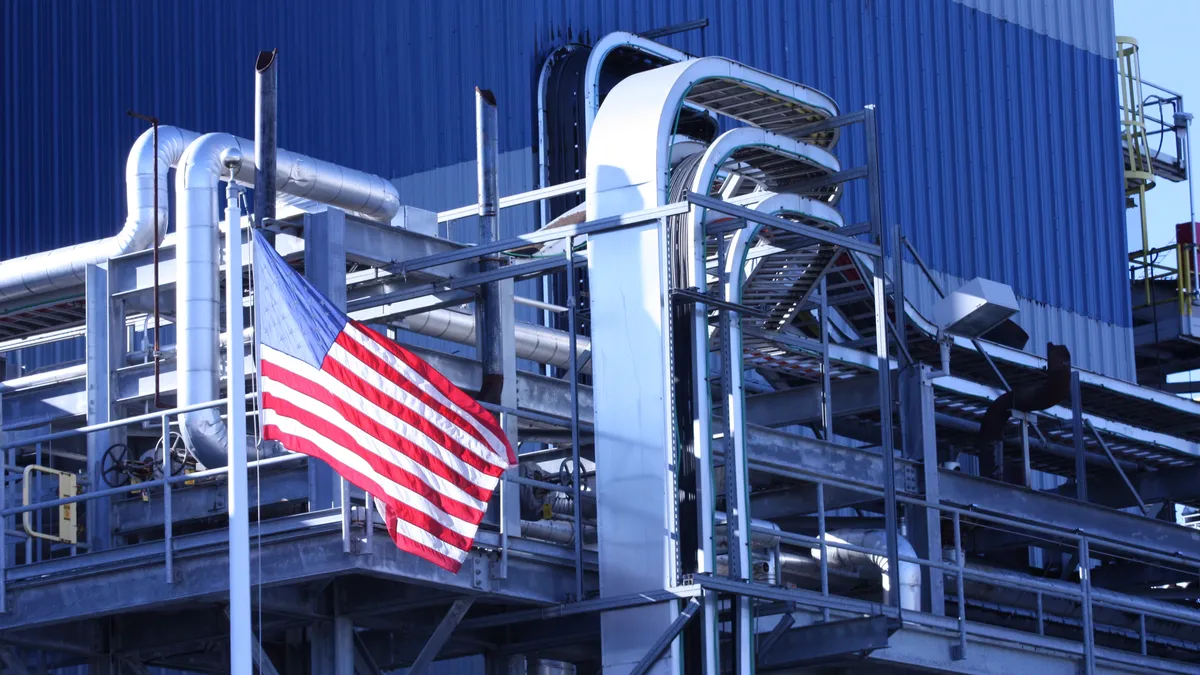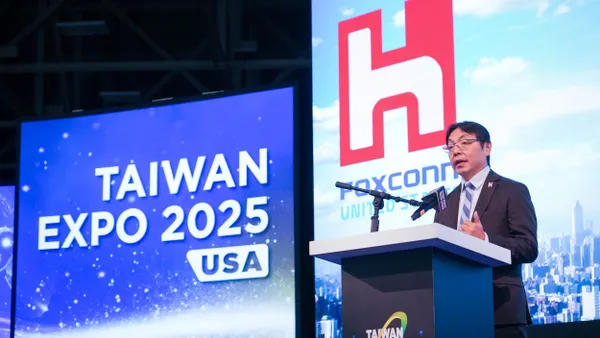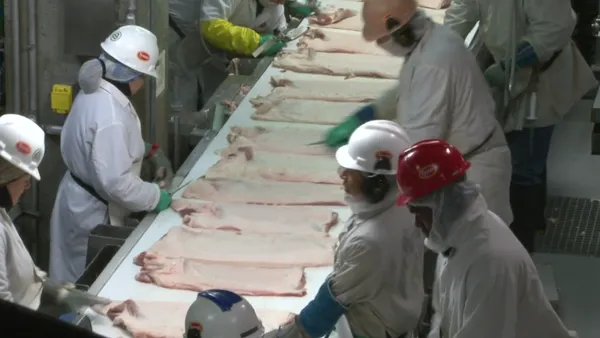Dive Brief:
- Taiwan Semiconductor Manufacturing Co. saw its second quarter earnings increase, with revenue up 44.4% year over year to an estimated $30.1 billion, the chipmaker announced Thursday.
- The Q2 revenue boost was due to the “continued robust” demand for artificial intelligence and high-performance computing-related products, Wendell Huang, SVP and CFO, said in a statement.
- Looking ahead, TSMC expects revenue to be between $31.8 billion and $33 billion in Q3, driven by strong demand for its chip processing technologies, Huang added. The company also forecast overall 2025 revenue to be up nearly 30%.
Dive Insight:
Chairman and CEO C.C. Wei provided more details of the company’s manufacturing plans in the United States on the earnings call on Thursday. In March, TSMC announced plans to invest an additional $100 billion in the U.S., bringing its total investment to $165 billion.
The expansion includes plans for six advanced wafer manufacturing fabs in Arizona. Its fourth facility will use N2 and A16 process technology, and its fifth and sixth facilities will use “even more advanced technology,” Wei said.
“The construction and ramp schedule for those fabs will be based on our customers' needs,” Wei said. “Our expansion plan will enable TSMC to scale up to a gigafab cluster in Arizona to support the needs of our leading-edge customers in smartphone, AI and HPC applications.”
The investment will also be used to build two advanced packaging facilities and establish a research and development center in Arizona to complete TSMC’s AI supply chain, supporting “strong multiyear demand” from TSMC customers, Wei added.
TSMC’s first Arizona fab began high-volume production in the last quarter of 2024, using N4 process technology. Construction of its second fab, which will utilize 3-nanometer process technology, is complete. Whereas the construction of its third fabrication facility, which will use 2-nanometer and 16 process technologies, has begun.
Once construction is completed, around 30% of TSMC’s 2-nanometer and “more advanced capacity” will be located in Arizona and create a semiconductor manufacturing cluster in the U.S., Wei said.
TSMC’s Q2 exceeded leadership’s expectations. It was previously anticipated to generate revenue between $28.4 billion and $29.2 billion.
Despite the revenue hike and positive forecast, the fluctuating foreign exchange rate between the U.S. and the Taiwan dollar could have a “sizable” impact on the chipmaker’s reported revenue and gross profit margin, Huang said on the earnings call. While nearly all of its revenue is in U.S. dollars, about 75% of TSMC’s cost of goods is sold in Taiwan dollars.
The company also experienced a financial impact of more than 100 basis points from ramping its overseas fabs, mainly due to margin dilution as TSMC’s Arizona and Japan fabs started to ramp up, he added.
“Despite the higher cost of overseas fabs, we will leverage our increasing size in Arizona and work on our operations to improve the cost structure,” Huang said. “We will also continue to work closely with our customers and suppliers to manage the impact.”
TSMC has six factors to determine its profitability: leadership technology development and ramp-up, pricing, capacity utilization, cost reduction, technology mix and foreign exchange. The latter of which is out of the company’s control, Huang added.
“When the foreign exchange rate is unfavorable as it is currently, we will focus on the fundamentals of our business and lean on the other five factors to manage through it, and we have successfully done in the past,” Huang said. “Thus, even with the unfavorable foreign exchange rate, we believe a long-term gross margin of 53% and higher remains well achievable.”
Going into the second half of the year, TSMC has not seen any changes in its customers’ behavior so far, Wei said on the call. Nevertheless, the chipmaker acknowledges the uncertainties and risks associated with the potential impact of tariff policies, particularly on consumer-related and price-sensitive end-market segments.
Still, the company believes that this is “short-term in nature” and continues to anticipate a mild recovery in the non-AI end market in 2025, Wei added.













